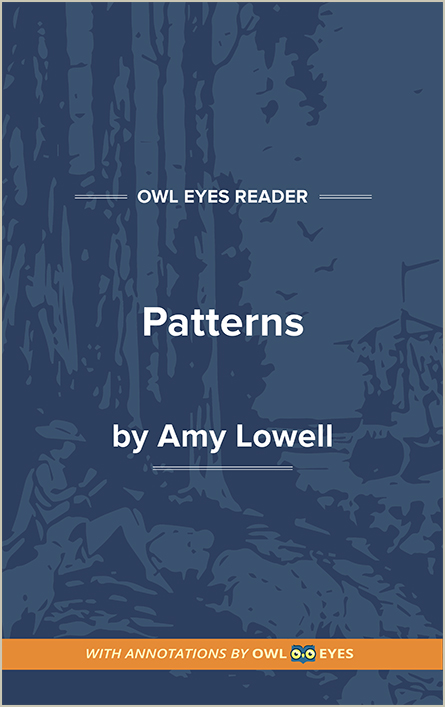Analysis Pages
Amy Lowell Biography
Amy Lawrence Lowell was born in the family home (named Sevenels after her birth because there were then seven Lowells) in Brookline, Massachusetts, just outside Boston. Both of her parents were from distinguished and wealthy Massachusetts families. Her father, Augustus Lowell, was a member of the wealthiest branch of the Lowells, the prominent family who had come to America in 1639 and later had become a major force in the intellectual and industrial history of Massachusetts. The mill town of Lowell, Massachusetts, was named for the family. Lowell’s mother, Katherine Bigelow Lawrence, was the daughter of Abbot Lawrence. The Lawrences were also an old American family, and another Massachusetts mill town was named for them.
Although the Lowells also owned a townhouse for the winter months, most of Lowell’s childhood was spent at Sevenels, and she continued to live there, with the exception of summers in New Hampshire and abroad, until her death. After her parents’ deaths, her mother’s in 1895 and her father’s in 1899, Lowell settled into Sevenels and made it her own, remodeling and refurnishing it extensively. The gardens there were the source of much of Lowell’s imagery.
Lowell had two brothers and two sisters. Both brothers distinguished themselves, each in a different area. The elder, Percival, after ten years in Asia and the publication of two books on the Far East, went to Flagstaff, Arizona, where he founded the Lowell Observatory and made discoveries concerning Mars. The younger brother, Abbott Lawrence, became president of Harvard University in 1909.
Lowell’s formal education was limited. She was a mischievous pupil who was easily bored and a challenge to her teachers. Although she received a private school education, she did not attend college. Her own comment on her formal education was that “it really did not amount to a hill of beans.” Most of her real education came from her avid reading in her father’s library and in the Boston Athenaeum, a building she later wrote about and saved from razing. Her future profession was foreshadowed when she discovered Leigh Hunt’s Imagination and Fancy and read it through and through. She was particularly taken with John Keats, about whom she later wrote a biography. Hunt’s ideas about poetry were those of an earlier time, however, and were responsible, in part, for Lowell’s unsuccessful first volume of rather old-fashioned poetry.
Because of a glandular condition, the five-foot-tall Lowell became obese in her adolescence and remained so, eventually weighing about 250 pounds. In spite of such corpulence, she was a successful debutante, having some sixty dinners given for her. Suitors, however, were few. Those who did appear were interested chiefly in her family connections. Lowell rejected two proposals of marriage and then accepted a third, only to be rejected later by her fiancé.
Eventually reconciled to spinsterhood, though not without much suffering, including a nervous breakdown requiring several years of convalescence, Lowell finally turned to poetry as a focus for her life. It also seemed to serve as a substitute for the orthodox Christian faith of her childhood, which she had rejected. Lowell had always been fascinated by the theater and was a creditable performer. Many thought that had she not been heavy, she would have become a professional actress. Her interest in theater, and indeed in all the arts, continued throughout her life. Perhaps not so coincidentally, then, it was an actress, the great Eleanor Duse, who inspired Lowell to become a poet. It was 1902, the third time that she had seen Duse perform. Lowell later said that watching her “loosed a bolt in my brain and I knew where my true function lay.” Having little training in poetry, Lowell began a long period of study and writing, with Hunt as her primary tutor. It was eight years before she published her first poems and ten before her first book appeared. During those years, she gradually...
(The entire page is 1,355 words.)
Owl Eyes subscribers get unlimited access to our expert annotations, analyses, and study guides on your favorite texts. Master the classics for less than $5/month!

